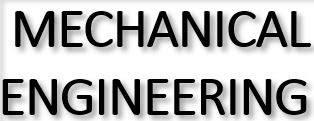In this article we learn the topic Die Casting Advantages, Disadvantages and Applications it is important point in manufacturing process so without wasting of time let's start,
Die Casting Advantages, Disadvantages and Applications
Definition:
Advantages of Die Casting :
2) Per piece cost is slightly inexpensive.
3) Creation speed is high.
4) Obtained high face finish with consistently no extra finishing required.
5) Need less space as compared with other casting processes.
6) Strong parts than plastic injection molding.
7) Die casting is easy for the mass production.
8) Die casting is heat resistant.
9) Dimensional accuracy is high, maintaining close tolerances.
10) Tensile strength of casting is high.
11) Reduce the secondary machining operations.
Disadvantages of Die Casting
1) Casting problem with large parts.
2) For high melting point it is not applicable.
3) Lead time is long.
4) The cost of machines and equipment is high compared to other casting processes.
5) Porosity is common due to gases.
6) Die casting is not suitable for batch production only suitable for large batch production.
7) Initial Cost: Setting up a die casting operation can be costly. The production of the molds or dies requires specialized equipment and skilled tooling professionals, which can result in significant upfront expenses.
8) Design Limitations: Die casting imposes certain design limitations. The complexity of the part geometry, including undercuts and thin walls, can impact the mold design and increase the cost. Draft angles may be required for easy ejection of the part, which can restrict the design options.
9) Limited Material Selection: Die casting primarily utilizes non-ferrous metals like aluminum, zinc, and magnesium alloys. While these materials offer favorable characteristics, the options are relatively limited compared to other manufacturing processes such as machining. Additionally, some materials may have limitations in terms of mechanical properties, high-temperature resistance, or corrosion resistance.
10) Porosity: Porosity is a common concern in die casting. The rapid cooling process can lead to the formation of small air pockets within the cast part, resulting in reduced structural integrity. Proper design and process optimization techniques can help minimize porosity, but it remains a challenge in certain applications.
11) Size and Weight Limitations: Die casting is more suitable for small to medium-sized parts. Producing very large or heavy components through die casting can be challenging due to the limitations of mold size, equipment capacity, and material handling.
12) Surface Imperfections: Although die casting produces parts with relatively good surface finish, some surface imperfections like casting lines, flash, or minor surface variations may be present. Additional post-processing steps such as trimming, grinding, or polishing may be required to achieve the desired surface quality.
13) Long Lead Times: Developing and manufacturing the dies can take time, especially for complex or customized parts. The design, prototyping, and tooling stages can contribute to longer lead times, which may impact time-sensitive projects.
It's important to evaluate these disadvantages alongside the advantages to determine if die casting is the appropriate manufacturing method for a particular application. In some cases, alternative processes like machining, extrusion, or investment casting may be more suitable based on the specific requirements and constraints.
Applications Of Die Casting:
Die casting has a wide range of applications across various industries due to its ability to produce complex, high-quality metal parts. Some applications of die casting include:
Automotive Industry: Die casting is extensively used in the automotive sector for manufacturing engine parts, transmission components, chassis parts, brackets, housings, and various other components. Its high production rate, dimensional accuracy, and strength make it ideal for automotive applications.
Aerospace Industry: Die casting is utilized in the aerospace industry to produce critical components such as turbine blades, engine housings, brackets, and structural parts. The lightweight yet strong properties of die-cast parts make them suitable for aerospace applications.
Electronics Industry: Die casting is employed in the electronics industry to manufacture enclosures, heat sinks, connectors, and other components. The excellent thermal conductivity of die-cast parts is beneficial for heat dissipation in electronic devices.
Consumer Goods: Many consumer goods, such as kitchen appliances, power tools, furniture hardware, and lighting fixtures, rely on die casting for the production of precise and aesthetically appealing parts.
Industrial Machinery: Die casting finds applications in the production of industrial machinery components like pumps, valves, gears, and housings. The process ensures consistent quality and dimensional accuracy for these critical parts.
Medical Equipment: Die casting is used in the medical industry to produce parts for imaging devices, surgical instruments, hospital equipment, and other medical devices. The ability to create complex shapes and tight tolerances is vital in this sector.
Telecommunications: Die casting is employed in the telecommunications industry for manufacturing antenna components, connectors, and enclosures for electronic devices.
These are just a few examples of the many applications of die casting. The versatility, speed, and precision of the process make it a preferred choice for producing high-quality metal parts across various industries.
So in this article we discussed Die Casting Advantages, Disadvantages and Applications hope you understand well.
Any query regarding this article comments below. Thanks for reading it 🙏.



.jpg)



